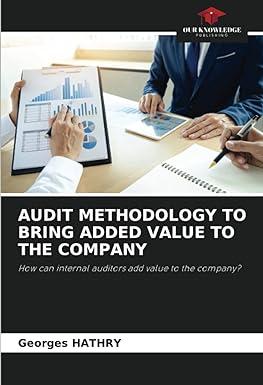Question
Problem 6-06A a1-a2 You are provided with the following information for Waterway Inc. Waterway Inc. uses the periodic method of accounting for its inventory transactions.
|
| ||||||||||||||||||||||||||||||||||||||
Prepare partial income statements for 2020 through gross profit, under each of the following cost flow assumptions. (Round answers to 2 decimal places, e.g. 125.25.)
| (1) | Specific identification method assuming: | ||
| (i) | The March 5 sale consisted of 1,000 liters from the March 1 beginning inventory and 1,300 liters from the March 3 purchase; and | ||
| (ii) | The March 30 sale consisted of the following number of units sold from beginning inventory and each purchase: 450 liters from March 1; 550 liters from March 3; 2,900 liters from March 10; 1,300 liters from March 20. | ||
| (2) | FIFO | ||
| (3) | LIFO | ||
| Sales revenueGross profit / (Loss)Ending inventoryCost of goods soldCost of goods available for saleBeginning inventoryPurchases | Specific Identification | FIFO | LIFO | ||||
| Sales revenueGross profit / (Loss)Ending inventoryCost of goods soldCost of goods available for saleBeginning inventoryPurchases | $ | $ | $ | ||||
| Sales revenueGross profit / (Loss)Ending inventoryCost of goods soldCost of goods available for saleBeginning inventoryPurchases | |||||||
| Gross profit / (Loss)PurchasesCost of goods soldBeginning inventorySales revenueCost of goods available for saleEnding inventory | |||||||
| Cost of goods soldSales revenueBeginning inventoryEnding inventoryPurchasesCost of goods available for saleGross profit / (Loss) | |||||||
| Ending inventoryPurchasesSales revenueCost of goods available for saleCost of goods soldGross profit / (Loss)Beginning inventory | |||||||
| PurchasesBeginning inventoryCost of goods available for saleCost of goods soldGross profit / (Loss)Sales revenueEnding inventory | |||||||
| Beginning inventoryCost of goods available for saleEnding inventoryPurchasesSales revenueCost of goods soldGross profit / (Loss) | $ | $ | $ |
| Click if you would like to Show Work for this question: | Open Show Work |
Step by Step Solution
There are 3 Steps involved in it
Step: 1

Get Instant Access to Expert-Tailored Solutions
See step-by-step solutions with expert insights and AI powered tools for academic success
Step: 2

Step: 3

Ace Your Homework with AI
Get the answers you need in no time with our AI-driven, step-by-step assistance
Get Started


